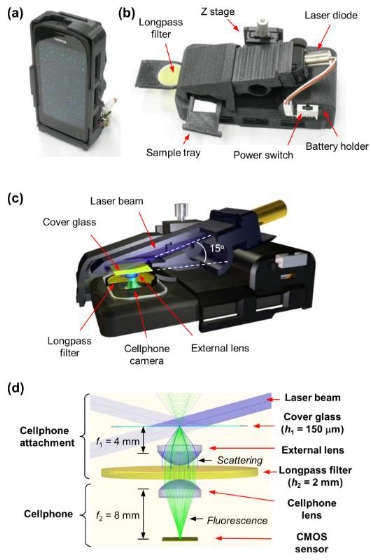
It seems there's little a smartphone can't be configured to do. Earlier this week, UCLA announced that the lab of one of its researchers, Aydogan Ozcan, a professor of electrical engineering and bioengineering, has developed a handheld smartphone attachment that enables a smartphone to detect viruses and bacteria without expensive and bulky microscopes and lab equipment. In the report, Ozcan said that the device, which weighs less than eight ounces, can be "used for specific and sensitive detection of sub-wavelength objects, including bacteria and viruses and therefore could enable the practice of nanotechnology and biomedical testing in field settings and even in remote and resource-limited environments."

Ozcan's research was published earlier this month in the journal ACS Nano. The article describes the invention as a fluorescent microscope device fabricated by a 3-D printer that contains a color filter, an external lens and a laser diode. The diode illuminates fluid or solid samples at a steep angle of roughly 75 degrees. This oblique illumination avoids detection of scattered light that would otherwise interfere with the intended fluorescent image. The news report from UCLA points out that capturing an image as small as a single virus is typically challenging because the optical signal strength and contrast are very low for objects that are smaller than the wavelength of light. This smartphone microscope device is the latest in a line of recent smartphone-based inventions, including a cellphone camera-enabled sensor for allergens in food products and a smartphone attachment that can conduct common kidney tests. For more on the Ozcan Research Group, visit http://org.ee.ucla.edu/, and for the original report from UCLA, click here.


